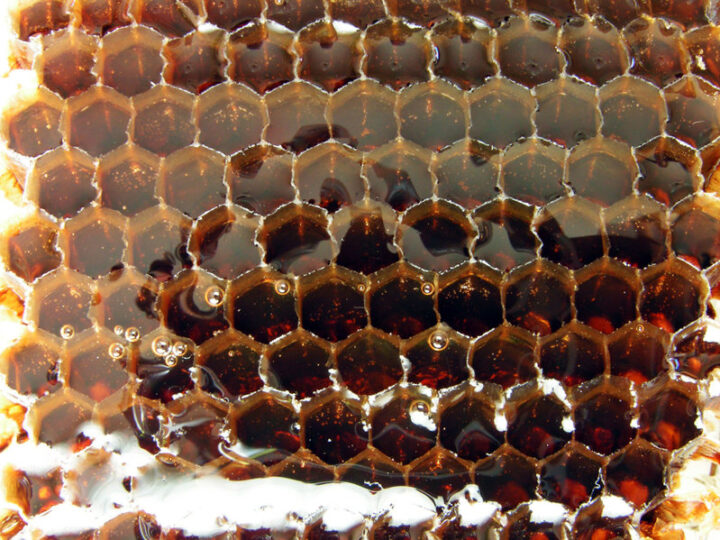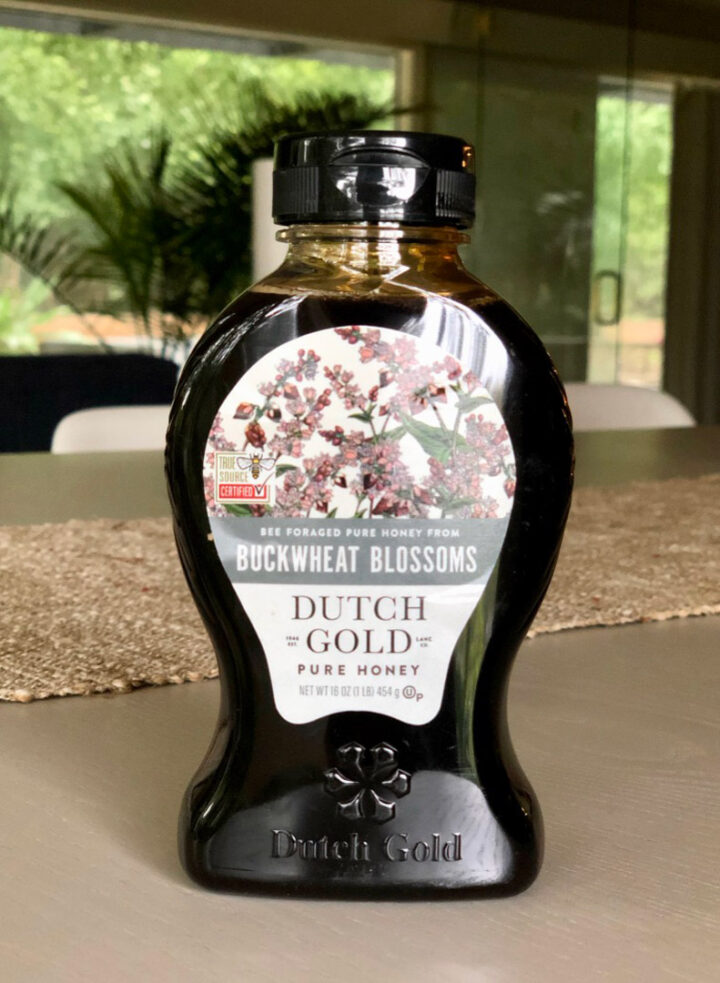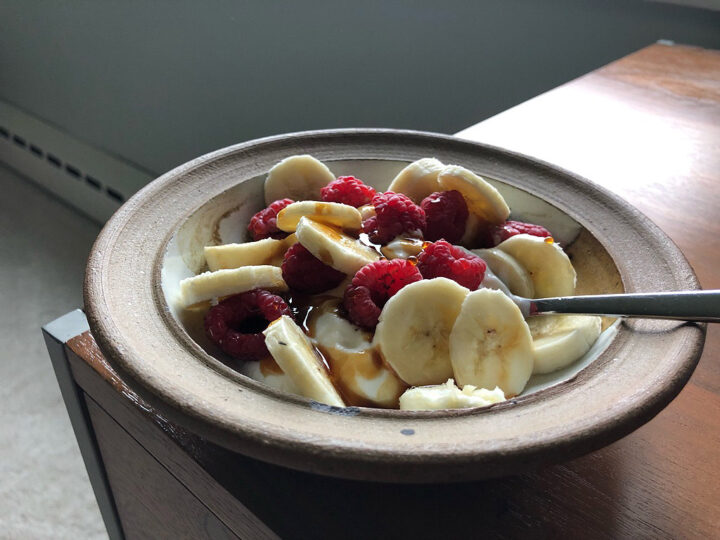
My wife recently asked me, “have you tried buckwheat honey before?” Nope. I’ve been living and breathing buckwheat pillows for many years and, oddly the opportunity to taste it had never come up. I was curious.

The internet’s flowery reviews call buckwheat honey “funky” and “like a barn.” That doesn’t really sound appetizing. Honey is supposed to be sweet and delicious… Undeterred, I ordered “pure buckwheat honey” from a company called Dutch Gold.
Buckwheat honey is very different from the yellow stuff in the plastic bear container.
Apparently the lighter a honey’s color, the milder the flavor. The typical yellow honey most of us are familiar with is filtered at high temperatures to remove things like pollen and beeswax. As a result, their flavors are much more mild.
Buckwheat honey’s dark color is a result of the polyphenols it contains. Polyphenols are type of micronutrient that naturally occurs in plants. Foods and beverages rich in polyphenol compounds typically are associated with bitterness.
When my package arrived, I pulled it out of the box and showed my kids.
Buckwheat honey is quite dark in color, a translucent brown. I’d guess it was molasses if it wasn’t labeled. Apparently it ranges in color from purple to black.
The kids were anxious to taste it.
“Yuck.” The reaction was the same from both. They’re never enthusiastic about new foods, so I shrugged and indulged.
The flavor is strong and… unexpected. Weird. “Funky,” yes. It not only looks like molasses, it also tastes reminiscent. It’s a little spicy, with malty overtones. It has an odd bitter characteristic that is quite distinctive. It’s also not as sweet as typical honey.
Where the buck does it come from?
Most honey is distinct from other types because of the nectar of the flowers used to produce it. The buckwheat plant produces long-lasting flowers that bloom into the fall. These flowers create a distinct nectar that honey bees love. As such, beekeepers often plant buckwheat around their beehives. The resulting honey is unique in both appearance and taste.

Buckwheat honey is an acquired taste.
Initially I thought it was a little too strange. But I’ve been having it with yogurt and fruit this week and it’s really grown on me. The flavor is surprisingly overpowering when sampled alone, but when it’s paired with other flavors, it’s really delicious. Halfway through the bottle, I’m a huge fan of buckwheat honey. My wife loves it too.
Is Buckwheat Honey Better for You Than Regular Honey?
Buckwheat honey is often considered more beneficial than regular honey due to its unique nutritional profile and higher antioxidant levels. Studies have shown that it contains a greater concentration of antioxidants compared to lighter, more common varieties of honey. Antioxidants are crucial for protecting the body from oxidative stress and reducing the risk of chronic diseases such as heart disease and cancer.
Furthermore, buckwheat honey has demonstrated stronger antimicrobial properties, making it more effective in soothing coughs and sore throats. Its rich, dark composition includes higher amounts of vitamins and minerals, such as iron, magnesium, and zinc, which contribute to its health benefits. Additionally, buckwheat honey’s low glycemic index means it has a more moderate effect on blood sugar levels, making it a better option for those monitoring their sugar intake.
Overall, while regular honey also offers various health benefits, the superior antioxidant content and enhanced therapeutic properties of buckwheat honey make it a more advantageous choice for those seeking additional health benefits from their sweeteners.
A couple good tips that can make your buckwheat honey more useful:
- Don’t use it in any recipe that calls for honey, because the flavor can be overpowering and it’s lacking the sweetness of traditional honey.
- Because it’s not a simple sweetener, it’s not quite as versatile as a traditional yellow honey. But it is great for when a little sweetness is required and extra flavor won’t get in the way of another. Thus it works well for things like marinades and bbq sauces.
